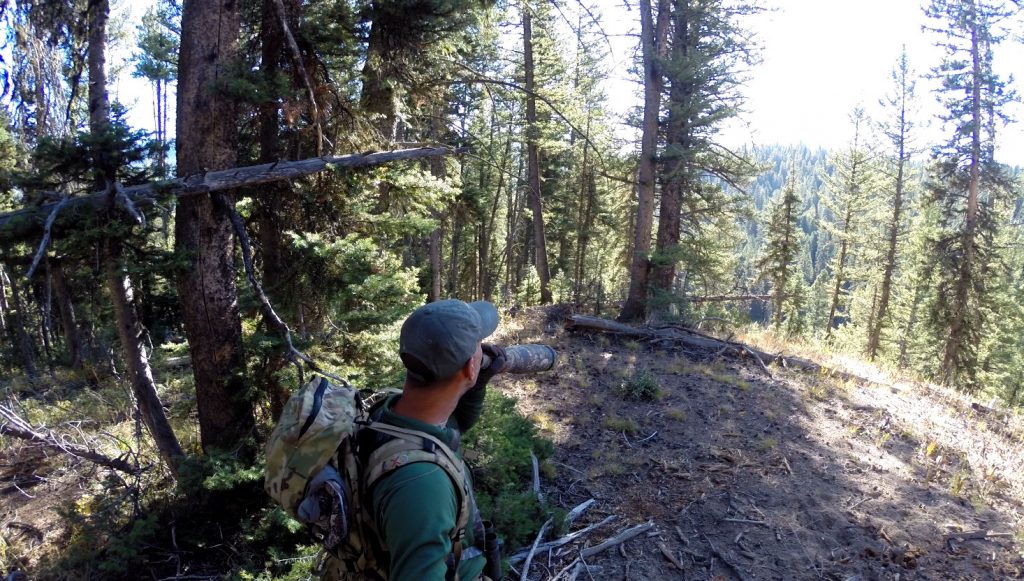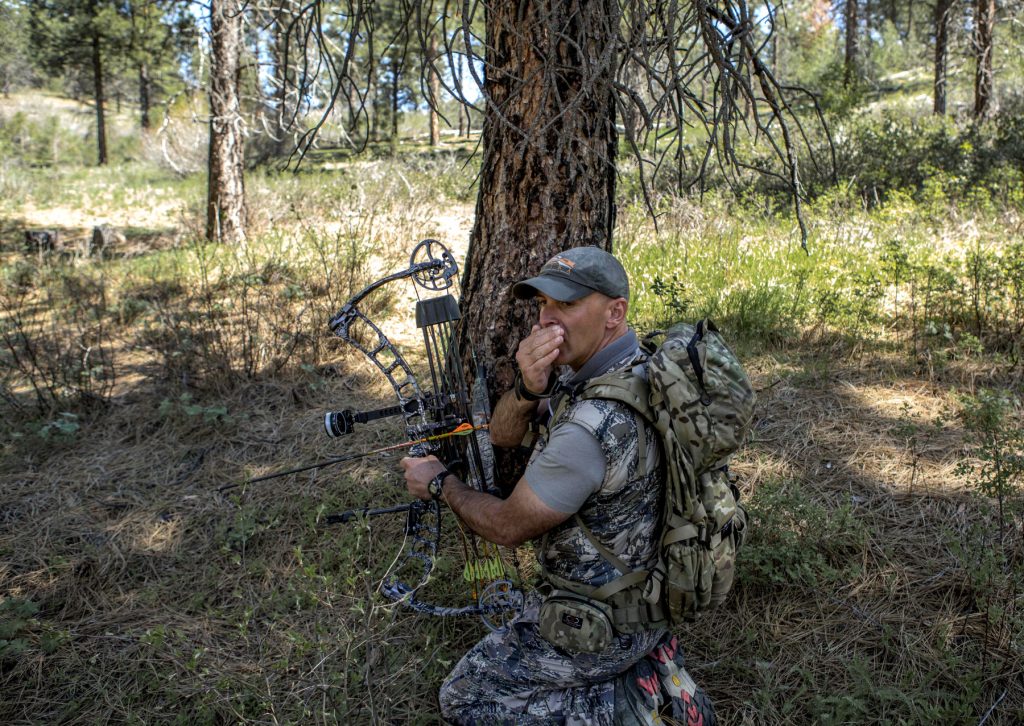
MODULE 8 - SETTING UP FOR ELK
CHAPTER 3: SETUPS FOR SOLO HUNTING

So, what happens if you don’t have a good hunting partner? Or, what if you just like the solitude of hunting alone and don’t want a partner? You can still enjoy consistent success in calling elk, but it will take a little more effort and attention to details.
Your goal is still the same, and all of the considerations mentioned in the previous Chapter still apply, only now you must play the role of both the caller and the shooter. What you now lack though, is the physical separation between the two. You must somehow set up in locations that allow you to make the elk think there is a separation between the shooter and the caller, which usually involves two very important elements: using the terrain more effectively, and using your calls more effectively.
USE THE TERRAIN
The ability to set up on the edge of a meadow is limited with a two-person setup. As a solo hunter, it’s pretty much non-existent. You will need to find setups that enable you to leverage the terrain even more effectively than you do with a two-person setup.
If a bull is calling from across a draw, you can’t allow him to think you are on the hillside across from him. He will likely come down to your level on the opposite side of the draw, and wait to get a visual. Instead, you need to set up on the top of the ridge and broadcast your calls down behind you, making the bull think you are on the backside of that ridge.

When he comes up, he will be thinking he needs to get to the ridgetop to visualize your location, but you will actually be waiting for him before he makes it to the ridgetop. Basically, you need to make the bull think you are calling from a location that is behind where you are actually set up and shooting from. This can be accomplished in two ways.
CALL LIKE A VENTRILOQUIST
When it comes to making a bull think you are calling from a location that is behind where you are physically set up, you need to either “broadcast” your calls behind you, or you need to make your calls, and then move forward to a shooting lane. Both tactics will work, but there are some limitations.

For instance, if you are hunting in more open country, it’s going to be difficult to call and then move forward without being seen. In this case, you’re going to likely want to broadcast your calls behind you, to make the bull think you are farther away than you actually are. This can be done by muffling your cow calls, or by turning around and “aiming” the calls away from the elk. Similarly, for bugles, you can point your bugle tube away from the elk, and make a quieter, softer bugle. Whatever you do, you need to make that bull think you are another 40-60 yards behind where you really are. That way, when he comes in looking for the source of the calls, he’s not pinpointing your location and expecting to see something right where you are set up.
SUMMARY
Calling elk can be one of the most exciting ways to hunt them. However, even with elk located, it usually takes far more than simply calling to them to get them to come in. The link between locating elk and calling elk is the setup, and knowing how to set up, as well as why to set up a certain way, will create a stronger link and ultimately, create more success.
There are a few keys points you want to remember as you are setting up to call in an elk. First, get as close to the elk as you can before you set up. If at all possible, get on the same level as the elk. Then, establish which direction the wind is blowing and make sure your setup protects you from the ever-sniffing nose of the elk. Lastly, find the path the elk is most likely to take as he comes in, and set up on the downwind side of that path.
There are a lot of additional elements that can make your setup even more effective, but if you follow these steps in each setup, your odds of bringing that bull in close will go up dramatically. And with your setup now established, it’s time to break out the calls and get that bull coming in on a string!
Click ‘Next Module’ Below to Continue to Module 9: Calling Elk




